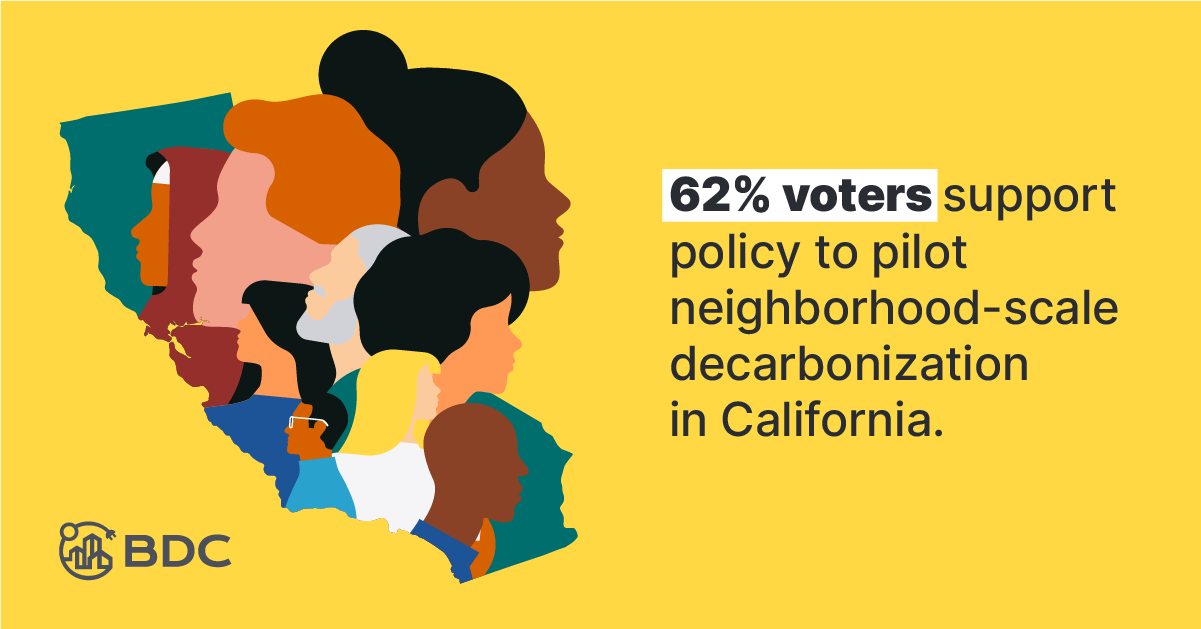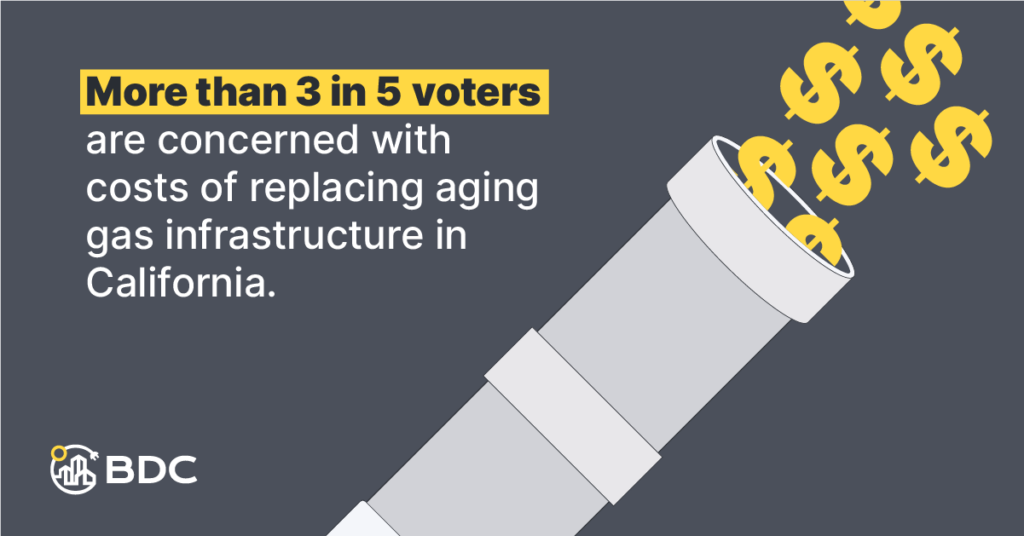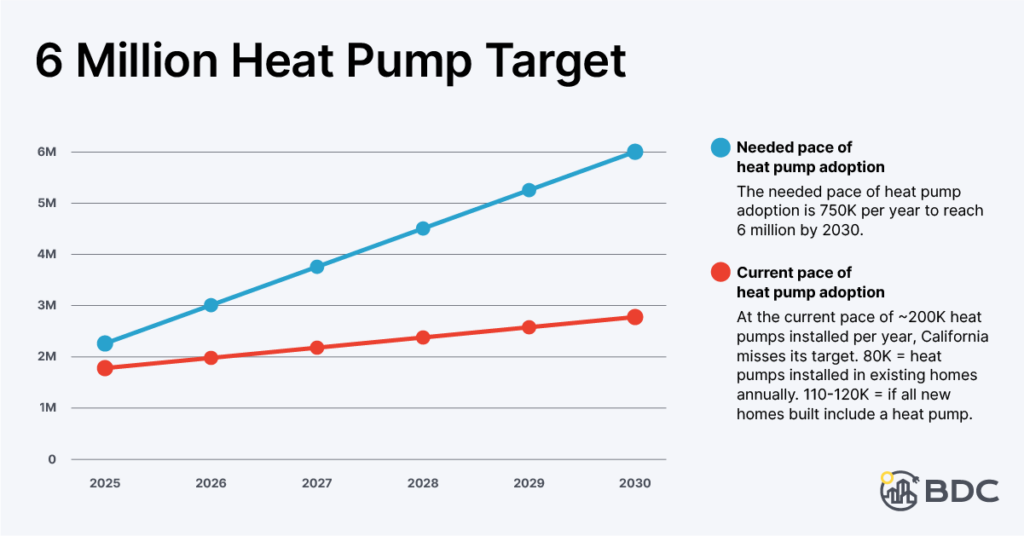
New poll: Californians want clean energy neighborhoods
New polling released from FM3 for the Building Decarbonization Coalition (BDC) finds that a healthy majority of California voters (62 percent) would support a policy to pilot a program to upgrade their neighborhoods to run on 100% clean electricity. A bill moving through the California Legislature this year could make that a reality. SB 1221, authored by Senator Dave Min (Irvine), would create long-term energy affordability for Californians by enabling zero-emission alternatives like neighborhood-scale building decarbonization or thermal energy networks where it is more cost-effective than replacing gas pipelines.
Replacing aging gas infrastructure in California costs an average of $3 million per mile, which is paid for by gas utility customers. More than three in five (62 percent) voters in the poll said that they are concerned that more than half of the state’s gas pipelines are nearing the end of their useful life and require costly maintenance or replacement.
Through neighborhood decarbonization, utilities can redirect this spending towards clean energy infrastructure, saving each impacted gas utility customer approximately $32,000 in 2024 alone, and ratepayers across the state $20 billion in the next decade, according to a new analysis. But without intervention, the California Energy Commission finds that gas bills could get as high as $600 per month by 2050.

Neighborhood decarbonization can also expand access to life-saving cooling and increase climate resilience during extreme heat waves. About 25 percent of Californians don’t have cooling equipment in their homes, with even greater disparities in communities of color. As extreme heat waves increase in frequency and duration, this approach can help equip households with heat pumps, which are more efficient than air conditioners.
Since heat pumps are a zero-emission technology, they can reduce emissions and improve air quality. California’s homes and buildings are the second biggest generator of greenhouse emissions in the state after the transportation sector. Gas-burning appliances in homes and buildings emit four times more nitrogen oxide pollution–which is toxic and smog-forming–than the state’s gas power plants. Powering neighborhoods with zero-emission appliances like heat pumps can cut down on harmful pollution and protect households against respiratory, cardiac, and other illnesses associated with gas appliances.
The poll found that two-thirds (66 percent) of California voters see improving air quality as “extremely” or “very important,” and about three in five also value providing access to life-saving cooling.
Decarbonizing at scale is especially critical for meeting Governor Newsom’s ambitious targets of creating 3 million climate-ready homes equipped with 6 million heat pumps by 2030, and 7 million climate-ready homes by 2035.

In California, there are currently about 1.5 million heat pumps installed in 800,000 homes. To close the 4.5 million gap, the state would need to install about 750,000 heat pumps per year to reach 6 million in 2030. However, the state is currently on pace to install less than 200,000 heat pumps each year (with 80,000 heat pumps installed in existing homes and assuming all of the 110,000 newly constructed homes annually are outfitted with heat pumps). California would need to nearly quadruple heat pump installations to meet its heat pump target.
Neighborhood decarbonization is critical for accelerating heat pump adoption. It can also create good jobs. California’s transition to zero-emission homes and buildings could support more than 100,000 construction jobs and 4,900 manufacturing jobs annually for 25 years.
Cities and universities in California are already leading the way, partnering with their utilities to power buildings with clean energy. Oakland’s EcoBlock project will upgrade an entire East Oakland cul-de-sac of historic and modern dwellings. Santa Monica is aiming to electrify over 150 units as part of three buildings, including one affordable housing complex. Albany has secured a grant to launch a pilot program to electrify one city block. And to date, PG&E has upgraded over 100 customers through targeted electrification. California State University, Monterey Bay is working with PG&E to electrify 1,200 units of campus housing, and both Stanford University and Santa Rosa Junior College already rely on thermal energy networks.
Neighborhood decarbonization is an important solution to the energy affordability crisis, and will clean the air, expand access to life-saving cooling, build climate resilience, and cut climate pollution. The majority of Californians would support a policy to enable neighborhood decarbonization. Now we need state leaders to champion SB 1221 and advance clean energy neighborhoods throughout California.
